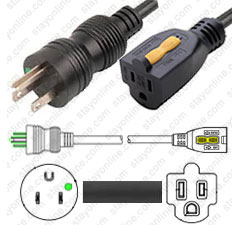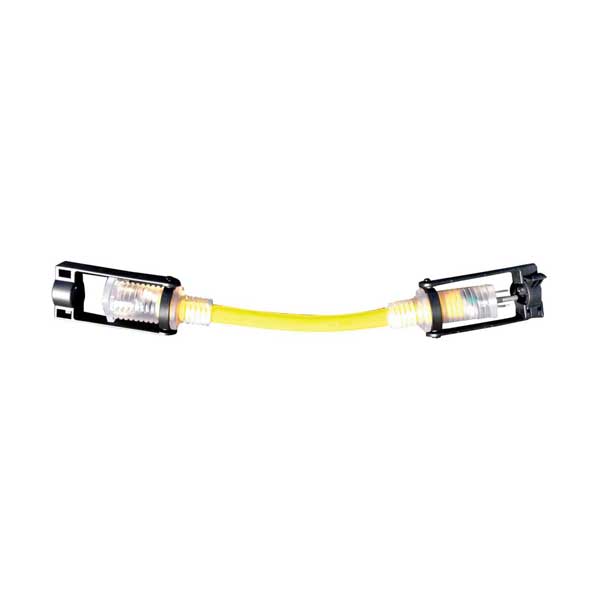Yesterday I was at an older IA venu. I was the only one on-site appairetly they trusted to convert their 4-pole 30A
range plug 14-30P to our L21-30
hoist plug for an
adaptor. (Not using
ground.) As I was taking apart the supplied
plug on a cable... all terminals were loose, really loose. Yes, when the
plug was installed, the terminals were probably tight. With load conductors expand and
settle in terminals becoming loose. This was a cable with
plug I removed they were actively using. A rattle test should have long ago revealed loose terminals on such a
plug. It was a good thing I gave them the
adaptor for them and for me, because if sucicious of one side of a cable... one should be suspicious of the other side should I have had to re-install the
plug. I made the IA crew aware of what I found instead.
Earlier last week I was traning on-job site some college educated (kids) on how to properly terminate L5-20 and
Edison. Two different Sharpees for showing right on the
plug a strip length verses
wire length to match up to on the
plug... for the guide inside the
plug.
Hand drafting since 1982 and wiring plugs since 94 ish in hundreds a year in knowing length and measurements. I can tell proper strip length of
jacket and
conductor within 1/16" from 10' away. I coach a
bit short on your 1.1/4"
etc.
That said, I even work with shop Department Managers who have been taught how to
wire plugs many times, and at times supervise their department on doing so... They still cannot properly install a
plug after at times 20+ years of experience. Some people just don't have in them to learn small things like installing a
plug, yet know how to service the most modern moving light. Or at least clean it. Repair dpt. often has to change lamps.
On the fence about from school being able to
wire a
plug properly... I would hope at least for a
base concept. I remember being tested in school about amperages of
wire gauges that's also not taught. So many types of
plug to
wire and i certainly was not trained for L21-30 or CamLoc termination. On one
hand I can teach anyone from McDonalds experience to college and MFA graduate in how to terminate stuff. College and MFA people are often more ready to learn but the hard part is me or one of my staff training them. Shop is busy even with an intent when not too busy to train.
That's for I work. Two of my six assistants have been with me over 15 years now so they know all I know in wiring. Our sodering techniques differ and we recommend teaching technique from many for own style in that.
But that's where I work. A hope given the skill
level in teaching... We try hard to train and master all cable types for all sent to us. Other companies like one I worked for as free lance... don't have a knowledge
base behind the crews. It is hoped in hiring, those trained often at low pay were trained professionals.
I remember the only time I disconnected a weather tight L21-30
plug from a service. It would not come loose... Nobody about me knew what I was supposed to do... like turn off the breakers in lights on, or stop gorilla twisting so as to remove.... Nope I twisted the
plug beyond it's plastic seprations in the vapor locked
plug melting down once tisted wires contacted another live
wire.
What did I know... and nobody else including my supervisors knew better about a vapor tight suction on a
plug seal.
It kind of sucked together in not just pulling apart, so I just kept twisting it to remove.
I went to a good school and was for the company I worked for trusted to do stuff as opposed to others on the crew.
So school verses venu or shop training, ability to train. Good question. I'm one of a few for training when I get the ability to do so. Life long and career for other's importance this is.





